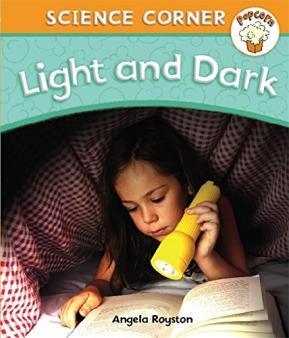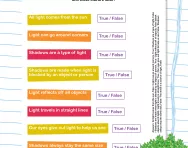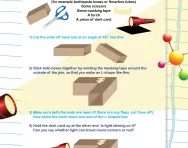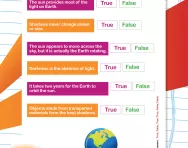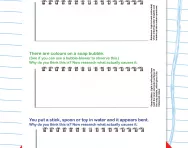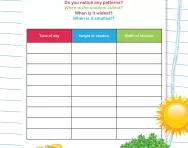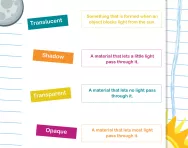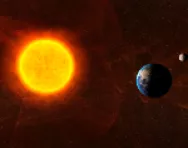Important update from TheSchoolRun
For the past 13 years, TheSchoolRun has been run by a small team of mums working from home, dedicated to providing quality educational resources to primary school parents. Unfortunately, rising supplier costs and falling revenue have made it impossible for us to continue operating, and we’ve had to make the difficult decision to close. The good news: We’ve arranged for another educational provider to take over many of our resources. These will be hosted on a new portal, where the content will be updated and expanded to support your child’s learning.
What this means for subscribers:
- Your subscription is still active, and for now, you can keep using the website as normal — just log in with your usual details to access all our articles and resources*.
- In a few months, all resources will move to the new portal. You’ll continue to have access there until your subscription ends. We’ll send you full details nearer the time.
- As a thank you for your support, we’ll also be sending you 16 primary school eBooks (worth £108.84) to download and keep.
A few changes to be aware of:
- The Learning Journey weekly email has ended, but your child’s plan will still be updated on your dashboard each Monday. Just log in to see the recommended worksheets.
- The 11+ weekly emails have now ended. We sent you all the remaining emails in the series at the end of March — please check your inbox (and spam folder) if you haven’t seen them. You can also follow the full programme here: 11+ Learning Journey.
If you have any questions, please contact us at [email protected]. Thank you for being part of our journey it’s been a privilege to support your family’s learning.
*If you need to reset your password, it will still work as usual. Please check your spam folder if the reset email doesn’t appear in your inbox.
What is light?
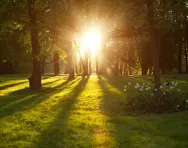
What is light?
Light is a type of energy that makes it possible for us to see the world around us.
We need light to see. Light comes from different sources called light sources; our main natural light source is the sun. Other sources include fire, stars and man-made light sources such as light-bulbs and torches.
Thanks to light, we see life in glorious colour: our eyes see different wavelengths of light as different colours.
Light also powers the technology around us: laser beams make CD and DVD players and printers possible, microscopes and telescopes use lenses to bend light (refraction), cameras record light as it reflects off objects and fibre-optic cables and lasers allow us to communicate at incredible speed.


Download fantastic science resources today!
- Experiments And Science Fun pack
- Brilliant science activities for every year of primary school
- All the instructions, questions and information you need
What are children taught about light in primary school?
At primary school children will explore how light behaves, including reflection, shadows and how we see things.
Reflection is how we use light to see around us.
Reflection is when light hits the surface of an object and then that light travels to our eyes so we can see. The reflected light from objects is absorbed by our eyes to form images of the world around us. Smooth surfaces such as mirrors, water and some metals reflect the most light which is why they appear shiny.
The moon reflects sunlight so we can see it shining brightly in the sky.
Shadows are created when an opaque (non see-through) object blocks the light source. Shadows change depending on the distance the object is from the light source and the position of the light source.
Light appears to travel in straight lines, travelling from light sources until it hits the surface of an object.
When are children taught about light?
In Year 1 children explore materials and may use the terms opaque (non see-through) and transparent (see-through) to describe different materials.
In Year 3 children begin to fully explore ‘light’. The new National Curriculum, introduced in 2014, requires children in Year 3 to understand that they need light to see and that light is reflected from surfaces. They will explore shadows and learn how shadows are formed when a light source is blocked by an opaque item. Children will consider the dangers of looking directly at light sources (mainly the sun) and how they can protect their eyes.
In Year 6 children consolidate their knowledge of light gained in Y3. They extend this understanding by learning about how light travels in straight lines. They will learn how we see, by understanding light travels from the light source to an object and then reflects to our eyes. Children consider why shadows have the same shape as the object that made them. Children may also explore rainbows, colours in bubbles and light appearing to bend in water.
How are children taught about light?
Children will learn about light from a range of sources such as the internet, information books and presentations.
In Year 3 they may be asked to complete activities such as identifying light sources by playing ICT games, practically sorting light sources or pictures. They will explore light practically by looking for and creating shadows using sunlight and torches. Children will learn through carrying out scientific investigations and experiments, for example looking at what happens to shadows when a light source moves or the distance between the light source and an object changes. They may explore mirrors to learn how light behaves.
In Year 6 children continue to develop their understanding of light and might make a periscope (a device used to see things that are out of sight), create shadow puppets or explore and create rainbows using different lenses.
Learn about light with activities at home:
- Visit the library with your child and search for books about light
- Go on a shadow walk; look for shadows and discuss the shapes created
- Try a BBC Terrific Scientific investigation into light and shadows
- Use chalk to draw around your shadows outside
- Discuss and find different light sources around the house
- Look at artwork of reflections (such as work by artist Simon Hennessey or M.C. Escher) and create your own reflection pictures
- Blow bubbles to see rainbow colours in them
- Make shadow puppets and discuss how to make the shadows bigger and smaller
- Ensure your child understands the danger of looking directly at sun light/ light sources, even when wearing sunglasses
- Download some Learn to Light activity sheets about light aimed at KS1 children
- Make your own periscope



